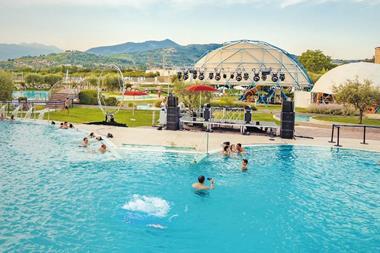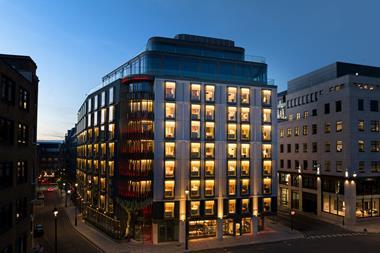In a guest commentary, the CFO of Therme Group wellbeing centres writes that there is nothing in the UK valuation formula that looks at the impact of a building on its occupiers or society at large.

‘The need for real estate to provide a positive social and environmental impact has never been so pressing: according to the World Business Council for Sustainable Development, buildings account for up to 40% of energy use in most countries.
Too few developers and investors are providing the right buildings consistent with the COP26 and UN targets on global warning and sustainable development. They need encouragement; and one of the big changes that could help bring this about would be the introduction of a consistent valuation methodology related to green and sustainable metrics.
Current valuation methodologies are based around cashflows. There is nothing in the valuation formula that looks at the impact of that building on its occupiers or society at large. If the only measure of success is a financial yardstick, which is purely based on cashflows, that only encourages behaviour that is purely aligned with producing cashflows for investors. If you want to encourage sustainability, it is vital that one adjusts the valuation framework to recognise the additional value provided by this infrastructure.
Compare, for example, two buildings delivering different social and environmental impacts. One is an office building, which has been developed for £300 mln (€354 mln) and is yielding a cashflow of £15 mln. The other is a Therme wellbeing resort, which has been developed, say, for £300 mln and is producing a similar cashflow of £15 mln. Based on cashflows, those buildings are both yielding around 5.0% and valued similarly. Is that right?
The benefit of the office building is limited to the small number of people who are occupying it, while for Therme Manchester we are forecasting two million visitors each year, which is probably 600-700,000 unique users. And those people change from one year to the next. As it’s a social infrastructure asset, surely Therme Manchester should have a yield premium?
The financial industry has made much progress in defining environmental and sustainability goals. Green Loan Principles and Sustainability Linked Loan Principles provide a useful framework for the underwriting of finance allocated to green initiatives or to meeting sustainability targets. However, the rules are not entirely clear, and each financing institution must define its own detailed underwriting criteria.
In the real estate sector, several frameworks from the broader industry can be used to value the social and environmental impact. Some examples include the best-practice methodologies endorsed by HM Treasury and OECD or the extensive toolkit developed by the New Economics Foundation to measure social and environmental value. But there are too many standards setters and heated debate about who owns the subject.
It is high time for a review of the Red Book so that it is brought into line with recent environmental, sustainability and human wellbeing goals.'









